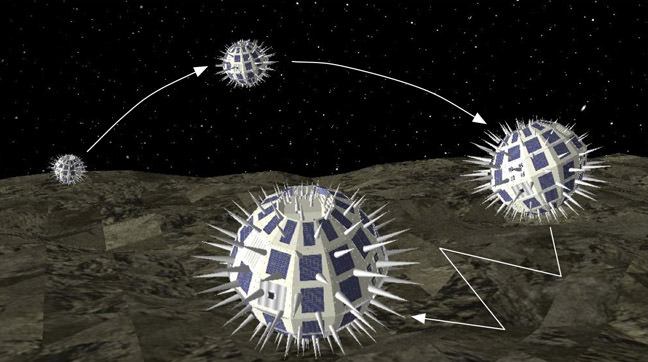[/caption]
With all there’s yet to learn about our solar system from the many smaller worlds that reside within it — asteroids, protoplanets and small moons — one researcher from Stanford University is suggesting we unleash a swarm of rover/spacecraft hybrids that can explore en masse.
Marco Pavone, an assistant professor of aeronautics and astronautics at Stanford University and research affiliate at JPL, has been developing a concept under NASA’s Innovative Advanced Concepts (NIAC) Program that would see small spherical robots deployed to small worlds, such as Mars’ moons Phobos and Deimos, where they would take advantage of low gravity to explore — literally — in leaps and bounds.
Due to the proposed low costs of such a mission, multiple spacecraft could be scattered across a world, increasing the area that could be covered as well as allowing for varied surfaces to be explored. Also, were one spacecraft to fail the entire mission wouldn’t be compromised.
The concept is similar to what NASA has done in the past with the Mars rovers, except multiplied in the number of spacecraft (and reduced in cost.)
The robots would be deployed from a “mother” spacecraft and spring into action upon landing, tumbling, hopping and vaulting their way across low-mass worlds.
In addition to providing our first views from the surfaces of such worlds, Pavone’s hybrid rovers could also help prepare for future, more in-depth exploration.
“The systematic exploration of small bodies would help unravel the origin of the solar system and its early evolution, as well as assess their astrobiological relevance,” Pavone explains. “In addition, we can evaluate the resource potential of small bodies in view of future human missions beyond Earth.”
Read more from NASA’s Office of the Chief Technologist here.
Photo courtesy of Marco Pavone

